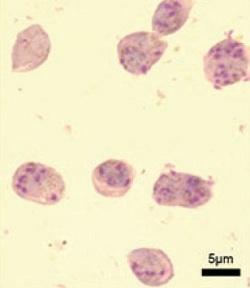River subbasins more depleted than
official figures show
09 April 2024
Published online 8 November 2011

The fight against malaria is ramping up. A new technique now allows biologists to manipulate the genes of a malaria-causing parasite at least 40 times quicker than before. The results are reported in Nature Methods.
Biologists hoping to create drugs and vaccines against malaria study the model organism Plasmodium berghei, a close relative of the human malaria-causing parasite, which is transmitted between mosquitoes and rodents. P. berghei has approximately 5,000 genes and defining the function of each gene should help pinpoint the malaria parasite's Achilles' heel, says Julian Rayner, a biologist at the Wellcome Trust Sanger Institute in Cambridge, UK.
Standard techniques to analyze these genes are slow, however. Biologists use enzymes to copy fragments of the parasite's genes and then mutate them to understand the consequences of removing or disrupting genes to determine the genes' function. These DNA fragments are stored in Escherichia coli, until they are ready to be re-introduced into the parasite. However, they are circular in structure and fragile in nature. The bacterium rejects any broken DNA coils.
The team, which includes biologist Arnab Paint from the King Abdullah University of Science and Technology (KAUST) in Thuwal, Saudi Arabia, got around this problem by engineering a non-circular DNA vector that could be tolerated by the E. Coli host.
They also used a technique developed in early 2011 that employs parts of a bacteria-infecting virus to cut, modify, and recombine the DNA while the vector is housed within the E. coli. "Instead of doing this in test tubes in the lab, which often fails and introduces a lot of errors, we manipulate the E. coli's machinery to do it for us, far more accurately," says team member Oliver Billker, also of the Sanger Institute.
These methods will allow the team to make 96 vectors in 8 days — a feat that would have previously taken a year. They now plan to build a library of vectors covering the parasite's entire genome, for widespread use.
doi:10.1038/nmiddleeast.2011.152
Stay connected: